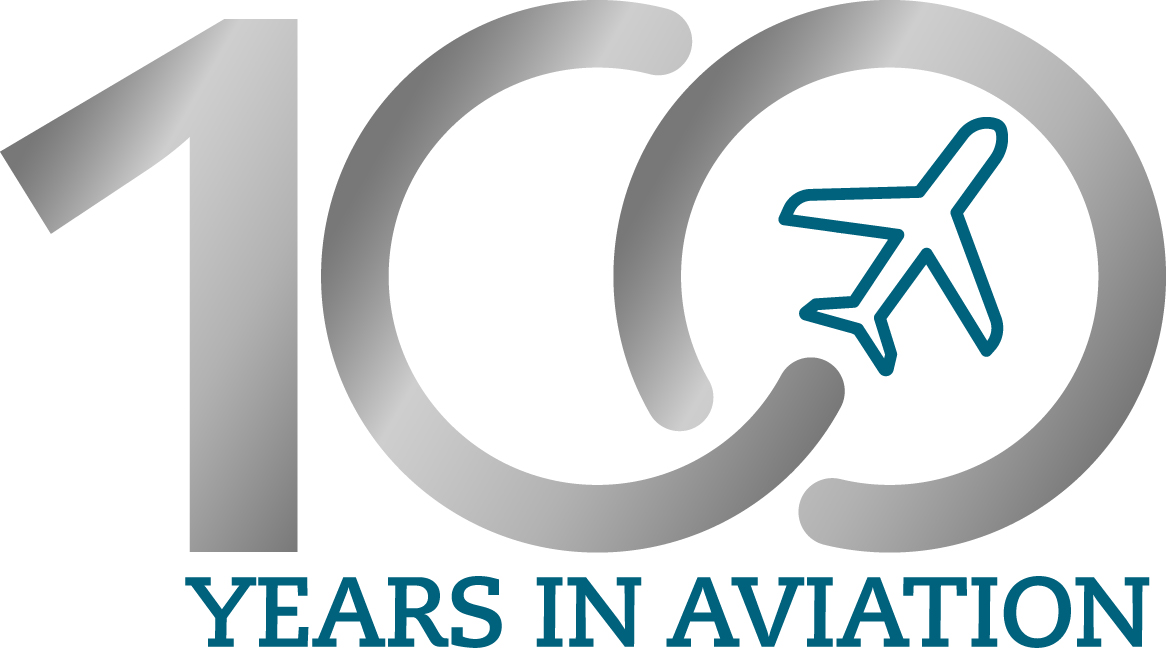A New American Flight Path for Drones and Advanced Air Mobility
-
Insight Article miércoles, 11 de junio de 2025 miércoles, 11 de junio de 2025
-
North America
-
Tech & AI evolution
-
Aviation & Aerospace
In this insight, Partner Ken Quinn and Senior Counsel Alex Matthews examine two landmark Executive Orders issued by President Trump on June 6, 2025, that reshape the regulatory and strategic landscape for drones and advanced air mobility (AAM) in the United States. This article explores how these directives attempt to accelerate beyond visual line of sight (BVLOS) drone operations, advance domestic electric vertical take-off and landing (eVTOL) aircraft operations, and introduce new national security measures to protect U.S. airspace. Ken and Alex also consider the strategic and compliance implications for industry stakeholders navigating this rapidly evolving policy environment.
On June 6, 2025, President Trump issued two Executive Orders (EO) reshaping the regulatory landscape for unmanned aircraft systems (UAS or drones): “Unleashing American Drone Dominance” and “Restoring American Airspace Sovereignty.”1 The Orders direct unprecedented federal urgency in expanding drone operations and addressing related U.S. airspace security concerns, including an aggressive 240-day timeline for publishing the final rule on beyond visual line of sight (BVLOS) drone operations under FAA regulations in 14 C.F.R. Part 108.

The Drone Dominance EO also addresses broader advanced air mobility (AAM) by directing the FAA to establish an electric vertical take-off and landing (eVTOL) aircraft Integration Pilot Program (eIPP) to accelerate deployment of eVTOL operations in the U.S. with opportunities for public-private partnerships.
The Orders come at a critical time for the FAA, which has come under scrutiny with recent safety incidents and accidents, challenges in modernizing air traffic control, and staffing retirements, buyouts, and changes. President Trump’s nominee for FAA Administrator, Republic Airways CEO Bryan Bedford, reportedly said in a recent Senate questionnaire that “[t]here appears to be no incentive for anyone at FAA to take any innovation risk for fear that it could fail.” The June 6 EOs will challenge FAA’s ability to foster innovation. Mr. Bedford commented on the emerging UAS and eVTOL industries during his Senate nomination hearing on June 11, 2025, noting “[w]e are behind. We must recognize we are behind and figure out how we can collaborate to jumpstart entrepreneurship here in the United States.”
The wide-ranging EOs address significant economic opportunities and national security imperatives in the UAS and eVTOL sectors, positioning American manufacturers for competitive advantage while implementing enhanced security measures against foreign-manufactured systems. Companies relying on Chinese-manufactured UAS components face potential supply chain disruption, while domestic manufacturers benefit from accelerated regulatory pathways and federal procurement preferences. BVLOS operations under Part 108 could transform commercial opportunities by eliminating the current waiver-dependent system under Part 107.
Organizations that proactively engage in rulemaking, adapt supply chains to prioritize domestic sourcing, and position themselves for BVLOS operations and enhanced security measures could have significant opportunities under a transformed regulatory landscape that prioritizes American manufacturing and technological leadership. Key provisions from the EOs and initial recommendations are summarized below.
Executive Order – “Unleashing American Drone Dominance”
BVLOS Operations:
- Within 30 days (July 6, 2025): FAA must issue a proposed rule enabling routine BVLOS operations for commercial and public safety purposes (Part 108). Under current rules, drone operators must maintain visual contact with the drone being operated absent a waiver.
- Within 30 days (July 6, 2025): FAA must stablish clear performance and safety metrics for BVLOS operations.
- Within 120 days (October 4, 2025): FAA must initiate deployment of AI tools to expedite Part 107 waiver application reviews.
- Within 180 days (December 3, 2025): FAA must identify additional regulatory barriers for BVLOS operations with recommendations for resolution.
- Within 240 days (February 1, 2026): FAA must publish BVLOS final rule.
UAS Supply Chain and Exports:
- Immediate: All federal agencies directed to prioritize integration of U.S.-manufactured UAS.
- Immediate: The Secretary of Defense, President of the U.S. Export-Import Bank, Chief Executive Officer of the U.S. International Development Finance Corporation, and Director of the Trade and Development Agency must prioritize and support the export of U.S.-manufactured civil UAS and related systems.
- Within 30 days (July 6, 2025): Federal Acquisition Security Council must publish a Covered Foreign Entity List identifying companies posing supply chain risks.
- Within 90 days (September 4, 2025): The Secretary of Commerce must propose rulemaking and investigations to secure U.S. drone supply chain against foreign control or exploitation.
- Within 90 days (September 4, 2025): The Secretary of Defense must expand the Defense Innovation Unit’s (DIU) Blue UAS List to include all compliant drones and components, which must be updated on a monthly basis.
- Within 90 days (September 4, 2025): The Secretary of Commerce must review and amend export control regulations to enable expedited export of U.S.-manufactured civil UAS.
eVTOL Integration Pilot Program:
- Within 90 days (September 4, 2025): FAA must issue a request for proposals to state, local, tribal, and territorial governments for the eIPP as an extension of the FAA’s UAS BEYOND program. Proposals must be submitted within 90 days of the RFP issuance and include a private sector partner with demonstrated experience in eVTOL development, manufacturing, and operations.
- Within 180 days of the RFP issuance: FAA must select at least five pilot projects that plan to begin operations within 90 days. Selection criteria must include: the use of eVTOL aircraft and technologies developed or offered by a U.S.-based entity; overall representation of economic and geographic operations and proposed models of public-private partnership; and overall representation of the operations to be conducted, including advanced air mobility, medical response, cargo transport, and rural access.
Executive Order – “Restoring American Airspace Sovereignty”
- Immediate: Establishes a Federal Task Force to Restore American Airspace Sovereignty, chaired by the Assistant to the President for National Security Affairs (APNSA), to review relevant operational, technical, and regulatory frameworks and develop and propose solutions to UAS threats by criminals, terrorists, and hostile foreign actors.
- Immediate: Executive departments and agencies shall employ drone detection equipment consistent with Fourth Amendment protections.
- Immediate: FAA must submit notice of proposed rulemaking to the Office of Management and Budget (OMB) for restricting drone flights over fixed site facilities and interpreting critical infrastructure consistent with the definition in the Order.
- Immediate: Attorney General must implement the recommended creation of a National Training Center for Counter-UAS focusing on the 2026 FIFA World Cup and 2028 Summer Olympics.
- Within 30 days (July 6, 2025): The Attorney General, Secretary of Transportation, Secretary of Homeland Security, and FCC Chairman must revise the August 2020 “Advisory on the Application of Federal Laws to the Acquisition and Use of Technology to Detect and Mitigate Unmanned Aircraft Systems” to reflect relevant developments in Federal law and regulations addressing drones.
- Within 30 days (July 6, 2025): The Attorney General and Secretary of Homeland Security must explore integration of counter-UAS responses into Joint Terrorism Task Forces for mass gathering events.
- Within 60 days (August 5, 2025): FAA must establish automated real-time access to personal identifying information from UAS remote identification signals for law enforcement.
- Within 60 days (August 5, 2025): The Secretary of Homeland Security and FAA Administrator must publish guidance for private critical infrastructure owners or operators on drone detection technologies.
- Within 90 days (September 4, 2025): The Secretary of Homeland Security and Attorney General must submit a recommendation to the President, using a risk-based assessment, for designating borders, airports, Federal facilities, critical infrastructure, and military installations, facilities, and assets as covered facilities or assets under 6 U.S.C. 124n and 10 U.S.C. 130i.
- Within 180 days (December 3, 2025): FAA must make Notices to Airmen (NOTAMs) and Temporary Flight Restrictions (TFRs) freely available online in an open format for drone geofencing and Aircraft Navigation and Guidance system purposes.
EO Impacts and Initial Recommendations
The sweeping changes create immediate compliance obligations and strategic opportunities for aviation companies. Organizations will need to conduct comprehensive supply chain assessments to identify vulnerabilities with foreign-manufactured components that may be subject to new restrictions under the forthcoming Covered Foreign Entity List.
Companies should prepare for accelerated Part 108 rulemaking by reviewing current operations and planning for BVLOS use cases. The transition from a waiver-dependent system to routine BVLOS operations requires operational adjustments and staff training. Organizations must also assess detection and identification capabilities for facilities near critical infrastructure subject to enhanced security measures.
Proactive participation in the Part 108 rulemaking will be essential given the compressed timeline. Companies should engage with the FAA early to ensure operational needs are considered. The AI-enhanced waiver processes and eVTOL pilot program present additional strategic opportunities.
Organizations should review amended export control regulations’ impact on overseas operations, as streamlined processes could create new market opportunities. Federal procurement preferences for U.S.-manufactured systems create positioning opportunities for domestic manufacturers demonstrating compliance with security requirements.
These Executive Orders represent the most significant federal intervention in the drone industry since the establishment of Part 107. The timelines and comprehensive scope signal a fundamental policy shift under the new Administration to prioritize domestic industry development while addressing security concerns by restricting foreign-manufactured drones. U.S. manufacturing leaders that are well known in the U.S. are likely to benefit, while those manufacturers from countries viewed as hostile to the U.S. are most likely to lose out. Caught perhaps in between are foreign drone and AAM manufacturers that will need to press their case for exceptions. The strategic implications extend beyond regulatory compliance to competitive positioning in global markets, harnessing drone potential to boost American productivity and global leadership while ensuring American airspace sovereignty, particularly with counter-UAS technology.
Clyde & Co is supporting clients across our global practice in understanding and navigating the rapidly evolving UAS, eVTOL, and broader AAM regulatory and commercial environments, with our ears to the ground, to help clients identify risks and opportunities.
1 The White House also issued the following corresponding Fact Sheets: Fact Sheet: President Donald J. Trump Unleashes American Drone Dominance – The White House; Fact Sheet: President Donald J. Trump Restores American Airspace Sovereignty – The White House.
End

